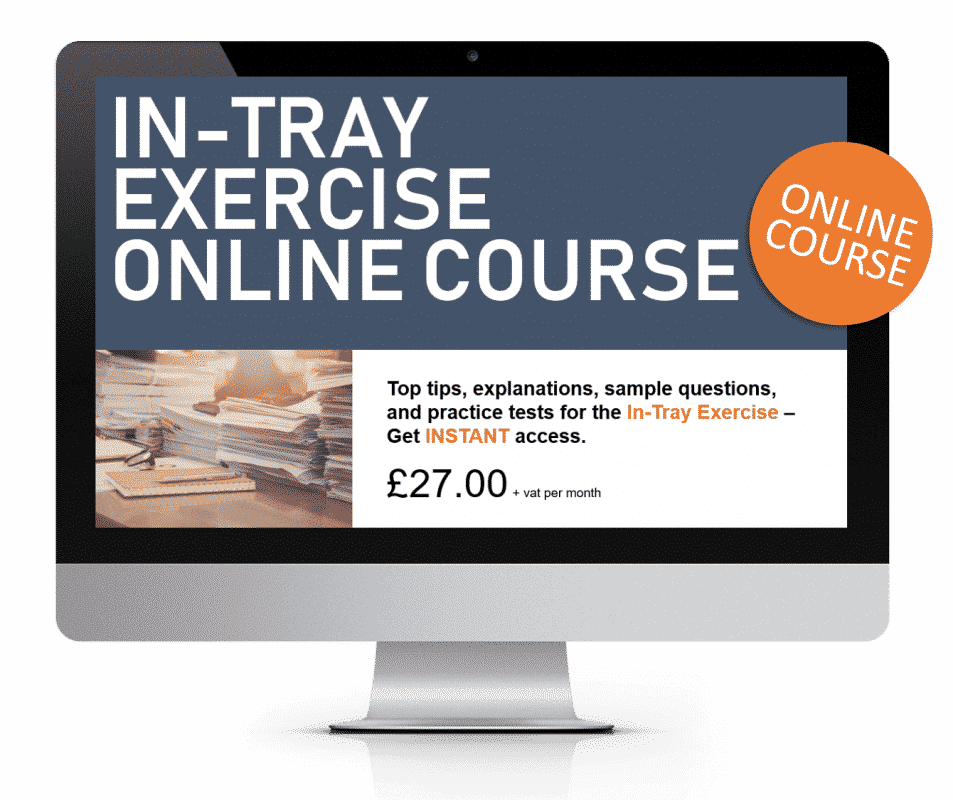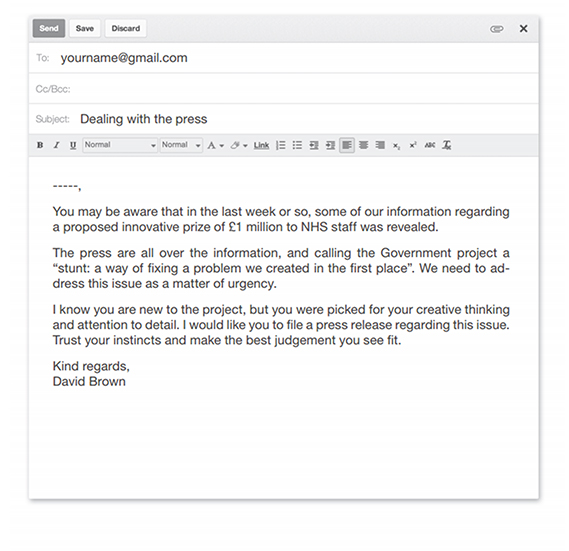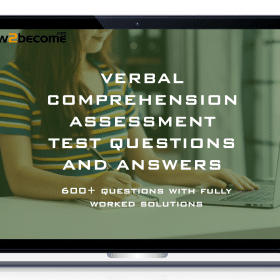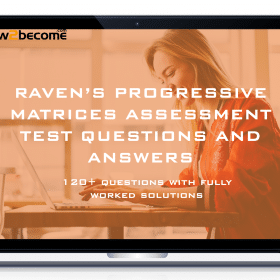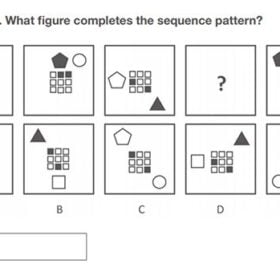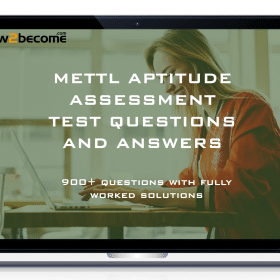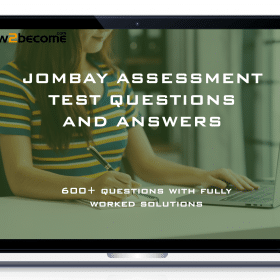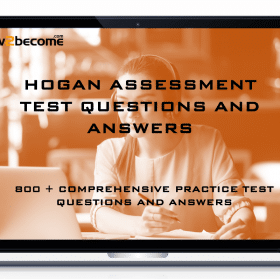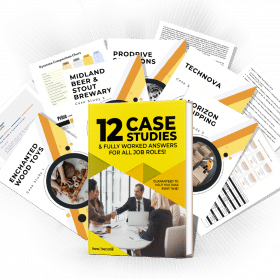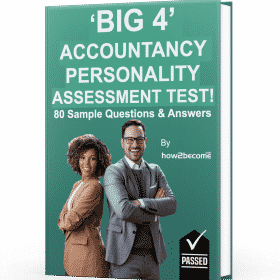WHAT DOES IN TRAY MEAN?
The term ‘in tray’ comes from the ‘in’ tray that one might find on their desk at work. It’s the tray where all of the tasks and information for the day would be placed, then moved into the ‘out’ tray once dealt with. Since a lot of office work is computerised nowadays, physical ‘in’ trays are less common than they were in previous years. However, the idea of an ‘in’ tray perfectly explains what an in tray exercise is.
Like a physical ‘in’ tray, in tray exercises consist of loads of different tasks that you have to complete in a time frame. Unlike in real life, where you might have a whole morning to get through the tasks, these exercises are usually between 1 and 2 hours long. However, some in tray exercises may be shorter or longer than this; try and find out exact timings in advance so that you can prepare accordingly. They’re usually conducted at assessment centres for the role, so if you make it to that stage of the application process, make sure to do some in tray preparation.
WHAT DOES IN TRAY ASSESS?
In tray exercises test your ability to do a number of different things, including:
- Read data carefully and gather information from it;
- Make mathematical calculations;
- Come to logical conclusions based on information;
- Prioritise tasks in order of importance;
- Make judgement calls regarding colleagues, managers, and customers.
Since in tray exercises are a simulation, you can expect to be placed within a scenario, and be given a role. The situation will likely be a working in a fictional company, dealing with all kinds of tasking ranging from sending an RSVP for an office party, all the way up to dealing with customer complaints and potentially even internal matters regarding discipline and harassment.
WILL I NEED TO DO AN IN TRAY EXERCISE?
This completely depends on the role you’re applying for, the company you’re applying to work at and the nature of the application process. If the application process for the role you’re applying for doesn’t include an assessment centre, then you probably won’t have to do an in tray exercise. However, you may have to do an E-Tray exercise. E-Tray is just like in tray in content, but is taken online and at a computer rather than physically at an assessment. Click here to find out more about E-Tray exercises (link to e-tray exercises course page here).
In tray exercises are used by a wide range of companies and organisations during the application processes for their available positions. Here are just a few fields where you might come across in tray exercises:
- Investment banks and firms (e.g. Citigroup);
- Auditing and financial advisory companies (e.g. Deloitte, KPMG);
- Government bodies such as the Civil Service.
There are also in tray exercises for teaching, becoming a school administrator, and positions in the NHS.
Since in tray exercises are used across such a broad range of companies for various positions, it’s quite possible that you’ll need to complete one as part of your assessment centre. If you do some research about the company you’re applying to work at, and their recruitment processes, you should be able to find out what’s expected of you.
HOW DOES IN TRAY WORK?
As previously mentioned, in tray exercises are business simulations. In a sense, you can think of them as a role plays, where you’ll have to assume the role of someone working in the fictional company. You’ll be given the circumstances of the scenario, including who you work for, what relevant things are happening that day, and any other information regarding the company’s core values and protocols. You’ll be given an ‘in’ tray with all of the tasks you’ll need to complete, along with plenty of different materials to read and interpret. These can include:
- Letters;
- Telephone messages;
- Calendars;
- Reports;
- Complaint letters;
- Emails (printed out);
- Charts and graphs representing data.
The types of task will include:
- Multiple choice tasks;
- Written exercises.
TYPES OF IN TRAY EXERCISES QUESTIONS
For this kind of question, there are multiple different variations. In one type of question, you’ll be given multiple possible answers, only one of which is correct.
You’ll need to read over the materials handed to you at the start of the in tray exercise, and then choose the most appropriate answer.
This is the most straight-forward of the in tray questions you can get – all you need to do is read the information given to you, then deduce the correct answer and choose it from the list.
Some questions will ask you to interpret data and simply choose the correct answer. Others may demand you choose the ‘best’ course of action, such as the most suitable response to an email or message.
On top of this, there are questions which will ask you to rank answers in order of importance. For example, you might have a list of tasks to complete, each with different deadlines. You’ll need to assess the materials given to you, then decide which tasks need to be completed first, and which ones can wait.
Here’s an example of an in tray multiple choice, ranking question:
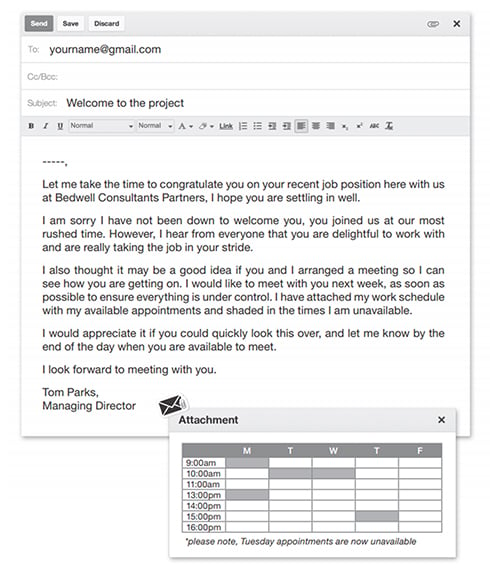
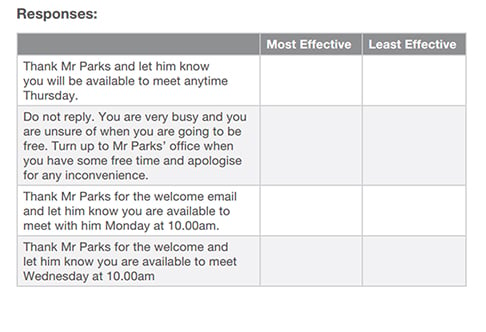
In contrast to in tray multiple choice tasks, you might also have in tray written tasks to complete. These are usually written responses to messages given to you via email or a memo. You’ll need to respond in a suitable manner, using the correct language and drawing upon the information given to you in the pack of materials supplied at the start of the exercise.
Take a look at an example of an in tray written task:
A possible client is unsure about the services Bedwell Consulting Partners has to offer. The client is called Randall Financing, and is a small company of 20 employees.
Write a letter to send to Randall Financing highlighting the key areas and subject expertise, reinforcing the requirements needed and issuing a standard introduction of who Bedwell Consulting Partners are, what they do and what they offer.
IN TRAY EXERCISE TIPS
Now that we’ve taken a look at some in tray exercise sample questions, it’s important to get some top tips on how to pass in tray exercises. To pass any in tray exercise, it’s important to keep the following four areas in mind:
- Time management;
- Careful reading and comprehension;
- Accurate responses;
- Appropriate tone.
Time management is important during in tray exercises for two reasons. Firstly, you might be asked questions which ask you to place tasks in priority order. You need to make sure you read the deadlines for each of the tasks and bear them in mind when writing your answer.
Secondly, you need to keep an eye on the time for completing the in tray exercise. As soon as you start, figure out how many questions you need to answer and how many exercises need to be completed. From there, figure out how much time you have for each question and then stick to that as much as possible. If it helps, bring a watch with you to the assessment, remove it from your wrist and place it on the desk that you’re working at. This way you can easily keep track of the time.
Another important tip for passing in tray exercises is to read the information carefully. You’re going to be given a lot of details in multiple different forms, so it’s important to examine each of them thoroughly so you don’t miss anything. The difference between a right and wrong answer will come down to how well you’ve read the materials, so make sure to spend time doing so before attempting any of the questions.
This follows from the point about reading carefully, but we can’t stress enough how important details can be during an in tray exercise. Make sure that you always include details in your written answers where appropriate, and don’t neglect them during your multiple choice answers, either. For example, if one of the questions involves referring to a calendar, make sure that you take note of the time of day, not just the date.
This is more important for the written exercise, but can impact some multiple choice questions, too. Different responses will demand different tone in order to be most suitable. For example, responding to an RSVP for a work dinner with colleagues could be less formal, whilst writing the response to a letter of complaint needs to be taken seriously, so the tone will need to be formal. Keep this in mind for any answer in the multiple choice section which has you choosing from a selection of responses, since some might be written in an inappropriate tone (e.g. excessively formal or informal).
IN TRAY EXERCISE EXAMPLES
Now that you have some tips to bear in mind, it’s important to take a look at an in tray exercise example. These free in tray examples will give you a better idea of what questions you might face in the real assessment, so take the time to familiarise yourself with their style and structure. Remember that these examples won’t have the exact same content as those in the real in tray exercise, so don’t spend too much time memorising the passages or your answers. Instead, use these to get an idea of what you’ll have to cover in your actual in tray exercise.
Here is part of an in tray exercise with answers further below:
SECTION A

How much would you get if you were to change up 127 US dollars into Pounds Sterling?
| A | B | C | D | E |
| £108.30 | £93.20 | £58.76 | £81.76 | £83.95 |

What is the new exchange rate for Australian dollars to Pounds Sterling?
| A | B | C | D | E |
| 1:0.621 | 1:0.224 | 1:0.315 | 1:0.550 | 1:0.440 |

How many Pounds Sterling would you receive if you were to change up 130 Canadian dollars after the new exchange rate?
| A | B | C | D | E |
| £83.75 | £81.05 | £85.02 | £87.06 | £84.01 |
SECTION B
SECTION C
You are working on brainstorms regarding a new and innovative project to promote dementia and create more awareness about the disease. Your task is to draft an email to the chairman of the Dementia Challenge programme suggesting your idea. You do not have to include any financial information, but using the information you have previously been given, come up with one example of an idea of an advertising strategy, the reasons for your choice, how it will benefit the Government and unique information that you think makes your idea stand out.
ANSWERS
IN TRAY EXERCISE SAMPLE ANSWERS
Now that you’ve had a chance to familiarise yourself with the style of questions in the in tray exercise, take a look at the following in tray exercise sample answers:
SECTION A
Q1. E
Explanation = 127 x 0.661 = 83.95.
Q2. D
Explanation = 0.598 / 100 x 92 = 0.550.
Q3. C
Explanation = 0.606 / 100 x 108 = 0.654. So, 130 x 0.654 = 85.02.
SECTION B
Ensure the press that the Government are coming up with different ways of tackling new and different incentives regarding the care of dementia, but state that no final decision has been made as of yet.
- This would be the MOST EFFECTIVE response. It deals with the press in a professional manner. Although you are not disclosing any information, you have not disregarded any rumours or agreed to them. You will be able to deal with this rumour when the time comes and when a decision has finally been made.
Use the press release to initiate the £1 million prize for NHS staff. State the incentive behind it and generate all the details regarding the prize to prompt a response from the press. Using the press will generate a ‘buzz’ for your upcoming project idea.
- This would be the LEAST EFFECTIVE response. You do not have the authority to issue a press release that affects the Government plans in the future. This idea has not been set in stone and is still being debated, therefore advertising the programme incentive is unprofessional and unproductive.
Indicate in your press release that this is a false rumour and that the Government are not implementing any strategies or incentives regarding a £1 million prize for NHS staff. Ensure the Government are trying to come up with new ideas to tackle dementia, but unfortunately this isn’t one of.
- Giving the press false information could affect your incentive in the long run. This would not be a good solution because the people in society may find it hard to trust your incentive if you have already lied about it before. Therefore you should avoid ruling out the idea and telling the press it is false, when it may possibly be true.
Tell the press that you have no information to disclose as of yet and file a complaint against the press for disclosing information regarding private Government matters.
- Filing a complaint about the press when the incentive may be true in the long run, could affect the reputation of the project. Filing a complaint will only stir up more unwanted attention and draw away from the bigger picture which is the dementia challenge programme.
SECTION C
TO: Linda Andrews
From: ———–
Date: 14th November 2014
Subject: New idea for advertising strategy
Linda,
My idea for the new advertising strategy is a fashion show with a documentary element. Dementia is always conveyed in a negative and upsetting way, and I believe that we could attract more attention and gain more awareness if we put a slight twist on this.
Using a fashion show, we would promote dementia from a first person point of view. We will use models who have all experienced dementia and therefore this adds a personal and experienced element to the campaign.
Throughout the fashion show, we can break it up into parts, whereby in each ‘break’ we play a short documentary of one of the models. This documentary will include their experiences with living with dementia. Not only does this create a sense of realism, but will also create some educational purpose in regards to what life is really like living with dementia.
Businesses are welcome to sponsor the clothes for the fashion show. Not only will this create style and elegance for the show, but will allow the Government to branch into the business world, and implement advertising strategies throughout the use of their companies.
Fashion shows are becoming increasingly popular and can be aimed at all ages and all types of people. I believe this creative idea will not only engage a variety of people, but can be created to attract a mass audience, therefore creating mass awareness.
I look forward to your feedback,
Kind regards,
FURTHER MATERIALS THAT YOU MIGHT BE INTERESTED IN
Many people find the in tray exercise a daunting challenge, and without adequate preparation it can be a struggle to complete accurately and in time. Fortunately, How2Become now offer an online in tray test to help you familiarise yourself with the structure of in tray exercises, and find out where you need to improve.
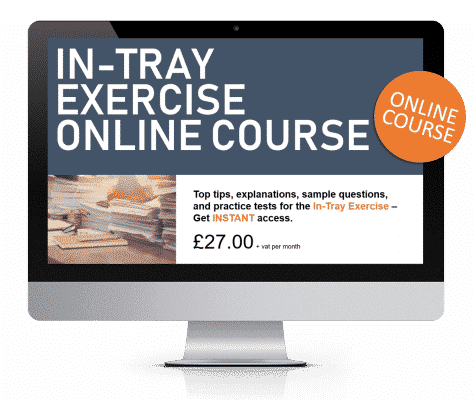
Thereafter £27.00+vat per month until cancelled.
Add to cart✓ 30-Day Money-back Guarantee
Did you know? All orders with How2Become are protected by our 30-day money-back guarantee. What ever the reason…or no reason at all…you can have your money back if this resource isn’t right for you (see our terms for full details).
Other Products
How To Pass In Tray Exercises
A very popular activity during an assessment centre is the in-tray exercise. This is an activity that is designed to demonstrate how you make decisions and work through tasks. You may be thinking, well I thought they tested that through the psychometric questionnaire – and yes they probably did, but do you remember that I said that assessors need to see consistency? The assessors need to see you perform consistently across all the activities, and an in-tray exercise is a good way to gauge that your decision making is indeed consistent. What is an in-tray exercise?
It is an assessment activity that requires you to put a number of suggested activities in the order that you perceive they should take place. It is an attempt to simulate a business situation, and typically you play the part of the employee who has come in either first thing in the morning or to a first day in a job, and there is a list of activities and events that you need to tackle. You need to read each item and decide on the order and how you will deal with each item (you may be asked to give reasons for each selection.) Oh, and to put a little pressure on, there is usually a time limit.
The in-tray may contain:
• Letters of complaint
• General letters/correspondence
• Memos
• Emails
• Notes
.. and you will usually be given some information about the company and a calendar to help you.
(Just a note – some organisations are now incorporating e-tray exercises. These are exactly the same as in-tray exercises except that the information is given to you completely by email so that the exercise becomes computer-based.)
What do in-tray exercises test?
In an in-tray exercise test, the assessors are looking for:
What is an in-tray exercise?
It is an assessment activity that requires you to put a number of suggested activities in the order that you perceive they should take place. It is an attempt to simulate a business situation, and typically you play the part of the employee who has come in either first thing in the morning or to a first day in a job, and there is a list of activities and events that you need to tackle. You need to read each item and decide on the order and how you will deal with each item (you may be asked to give reasons for each selection.) Oh, and to put a little pressure on, there is usually a time limit.
The in-tray may contain:
• Letters of complaint
• General letters/correspondence
• Memos
• Emails
• Notes
.. and you will usually be given some information about the company and a calendar to help you.
(Just a note – some organisations are now incorporating e-tray exercises. These are exactly the same as in-tray exercises except that the information is given to you completely by email so that the exercise becomes computer-based.)
What do in-tray exercises test?
In an in-tray exercise test, the assessors are looking for:
- Your ability to take in and process information
- Your capacity for analysing problems and looking ahead to future repercussions
- How you make decisions under pressure and prioritise effectively
- Your ability to be creative
- How you assess possible problems
- How effective you are at implementing solutions
- How you manage time effectively
- How you deal with people tactfully
- Your ability to delegate some tasks
- Your knowledge as to when it is appropriate that you respond personally
- Your ability to consider the wider implications for the organisation
- How you negotiate and/or influence others
- Think about the job you are applying for, what content are you likely to be given in an in-tray exercise? (Notice that although my two examples are a Head in a school and a manager, some of the problems listed are very similar because people and premises issues occur in many jobs).
- Remember that activities can be delegated if you have suitable staff (see the organisational chart if there is one).
- Highlight any additional important information such as the date or time.
- Make sure you do exactly what is asked of you. If you need to justify your thoughts – do that.
- Use high, medium and low priority piles first and then prioritise within those.
- Look for any links where two activities can be done at the same time, or conversely the same person cannot be in two places at the same time!
- Never shirk (or delegate) your responsibility.

